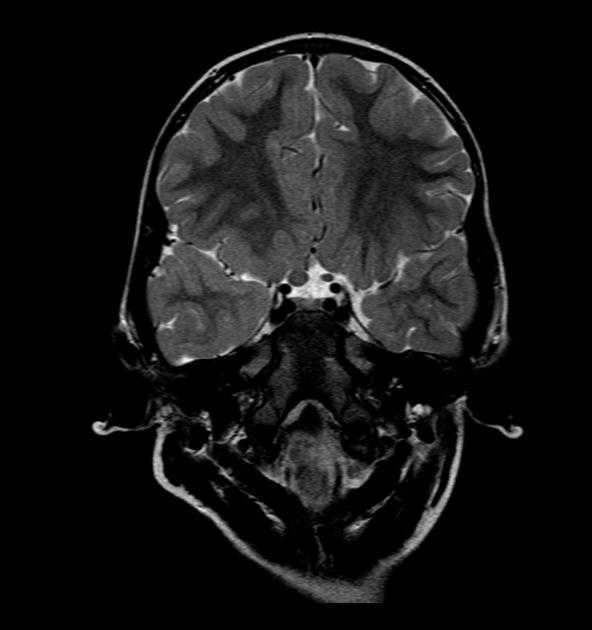Optic nerve glioma MRI
|
Optic nerve glioma Microchapters |
|
Diagnosis |
|---|
|
Treatment |
|
Case Studies |
|
Optic nerve glioma MRI On the Web |
|
American Roentgen Ray Society Images of Optic nerve glioma MRI |
|
Risk calculators and risk factors for Optic nerve glioma MRI |
Editor-In-Chief: C. Michael Gibson, M.S., M.D. [2]Associate Editor(s)-in-Chief: Simrat Sarai, M.D. [3]
Overview
On head and neck MRI, optic nerve glioma is characterized by isointense to hypointense mass on T1-weighted MRI, and hyperintense mass on T2-weighted MRI.
MRI
Radiographs no longer have any real role to play in the diagnosis of orbital masses, however if performed enlargement of the optic canal may be demonstrated if the tumor is not confined to the orbit. Additional findings of NF1 may also be visible. The diagnosis of optic nerve glioma is best made by magnetic resonance imaging (MRI), which allows visualization of the entire course of the optic nerve. MRI also delineates hypothalamic involvement more clearly than computed tomography (CT).
- The MRI features of optic nerve glioma include:[1]
| MRI component | Features |
|---|---|
|
|
|
|
|
|



References
- ↑ Optic nerve glioma. Radiopedia(2015) http://radiopaedia.org/articles/optic-nerve-glioma Accessed on October 2 2015
- ↑ 2.0 2.1 2.2 Image courtesy of Dr Frank Gaillard. Radiopaedia (original file [1]).[http://radiopaedia.org/licence Creative Commons BY-SA-NC